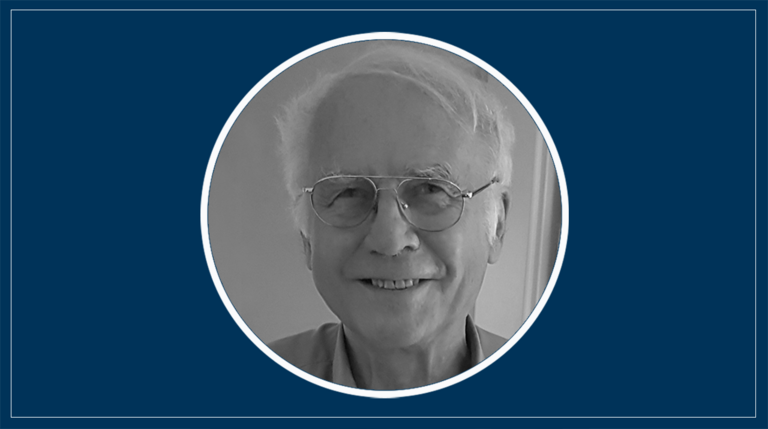The Institute of Physics and the Department of Mathematics and Natural Sciences mourn the loss of the former head of the "Theoretical Physics I" Goup and temporary institute director Prof. Dr. Klaus Handrich, who passed away on December 29, 2023. His commitment to physics in Ilmenau and his reputation contributed significantly to the fact that it is now possible to study technical physics at TU Ilmenau.

Klaus Dieter Handrich was born on September 7, 1939 in Hoyerswerda. He studied physics at the University of Leipzig, where he graduated in 1962. After an extended research stay at Lomonosov University in Moscow, he obtained his doctorate in 1967. This was followed in 1973 by a second doctorate ("Dr. B") at the TU Dresden, which today corresponds to a habilitation.
In 1969, in a pioneering publication comprising just four typewritten pages, Klaus Dieter Handrich created what is now known as the Handrich model of amorphous ferro- and ferrimagnets. Beyond the actual problem, the model is significant as an early application of statistical physics methods to structurally disordered systems. This groundbreaking work and other important, internationally recognized publications were integrated into the book "Amorphous Ferro- and Ferrimagnetics". Klaus Dieter Handrich, at that time already a lecturer at the Technical University of Merseburg, wrote this book together with his Dresden colleague, Prof. Dr. Siegesmund Kobe. Originally published by Akademie-Verlag, the book was recently republished as an eBook by De Gruyter-Verlag due to its enduring importance.
In 1988, Klaus Handrich was appointed to succeed Prof. Paasch as Professor of Theoretical Physics at the "Technische Hochschule Ilmenau". As the unofficial chronicle of the institute "Das Institut für Physik der TU Ilmenau im Zeitenwandel" by Christoph Schnittler and Gottfried Teichmann states, he brought statistical physics to Ilmenau as a new field of work and thus made a significant contribution to the institute's current orientation. The paper "Quantum mechanical magnetic-field-gradient drift velocity: An analytically solvable model", which appeared shortly after Prof. Handrich's retirement and which he published as sole author in 2005 in the internationally renowned journal Physical Review B, represents a fine conclusion to his official career. Every physicist knows the Schrödinger equation as the basis of quantum mechanics. However, only a few explicit analytical solutions to this equation in special cases, such as for the hydrogen atom, are known to date. Klaus Handrich was able to add another solution to this short list, namely the case of an electron in a special, spatially inhomogeneous magnetic field. He developed a methodical approach that can lead to further analytical solutions.
Prof. Klaus Handrich is still very much present in the consciousness of the Institute of Physics today, some twenty years after his retirement. On the one hand, this is due to his continued willingness to help wherever he could, for example by sitting in on classes to assess and advise active colleagues. On the other hand, he regularly attended the physics colloquia and the subsequent follow-up sessions until the corona period.
There were many stories to tell there, especially from the "wild" years after reunification. During this phase, Klaus Dieter Handrich, together with colleagues such as Prof. Gobsch, Prof. Schnittler and later Prof. Schäfer, twice initiated a physics course at the "Technische Hochschule Ilmenau", which had since become a technical university - the first time perhaps a little on the wrong side of the bureaucratic borders, but all the more successful in the second attempt. Prof. Handrich was always open to discussion at debriefings and similar occasions, and his humorous nature created a good atmosphere. You could discuss anything with him for mutual benefit, except Johann Sebastian Bach - he revered him above all else, for him Bach was incomparable.
Such memories, as well as the respect for his scientific work, will long be part of the collective consciousness of the Institute of Physics and the Department of Mathematics and Natural Sciences. They are grateful to Prof. Dr. Klaus Handrich for this. They will keep him in living memory and always honor his memory.

